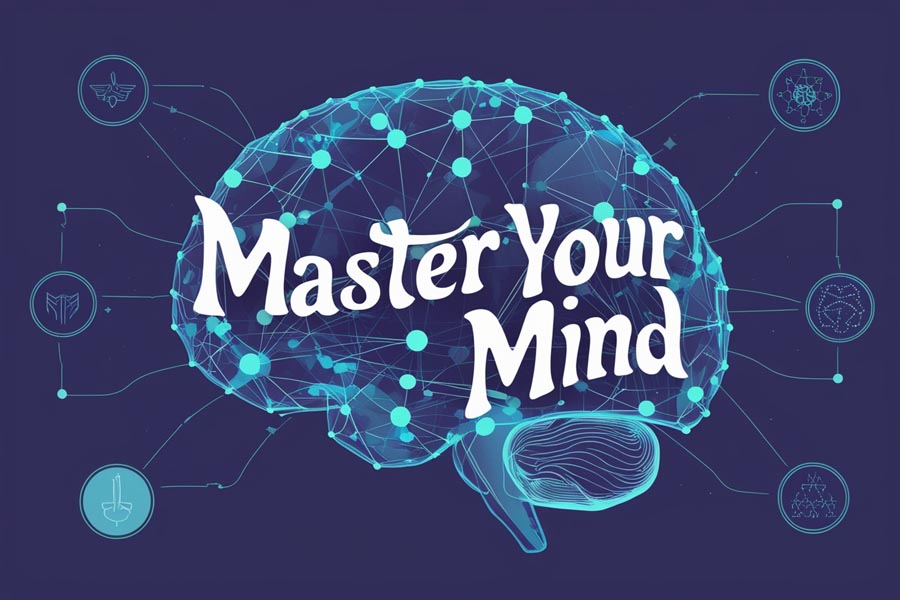Are you looking to enhance your forex trading skills and maximize your profits? Look no further than the trendline scalping strategy. This powerful technique, popular among forex traders using regulated forex brokers, combines the precision of trendlines with the quick-profit potential of scalping. Trendline scalping is a forex trading method that uses trendlines to identify short-term trading opportunities, allowing traders to enter and exit positions quickly for small but frequent profits. To make the most of this strategy, partnering with a reliable broker for forex can provide you with the necessary tools and market access to execute trades effectively.

In this comprehensive guide, we’ll dive deep into the world of trendline scalping, exploring its benefits, implementation, and best practices. Whether you’re a novice trader or an experienced professional, this article will equip you with the knowledge and tools to take your forex trading to the next level. By mastering trendline scalping, you can identify high-probability trade setups, manage risk effectively, and potentially increase your trading success in the dynamic forex market.
What is Trendline Scalping?

Trendline scalping is a trading strategy that combines two popular concepts in forex trading: trendlines and scalping. Let’s break down each component:
- Trendlines: These are straight lines drawn on a price chart to connect a series of highs or lows. They help traders identify the direction and strength of a trend.
- Scalping: This is a trading style that aims to profit from small price movements by entering and exiting trades quickly, often within minutes.
When combined, trendline scalping involves using trendlines to identify potential entry and exit points for short-term trades. Traders look for price bounces off trendlines or breakouts to make quick profits.
Benefits of Trendline Scalping
- Quick Profits: Scalping allows traders to capitalize on small price movements, potentially accumulating profits throughout the day.
- Reduced Exposure: Short holding periods minimize the risk of adverse market events affecting your trades.
- Increased Opportunities: The forex market’s high liquidity provides numerous trading opportunities for scalpers.
- Clear Entry and Exit Points: Trendlines offer well-defined levels for entering and exiting trades.
- Adaptability: This strategy can be applied to various currency pairs and timeframes.
- Improved Focus: The short-term nature of scalping helps traders stay alert and focused during trading sessions.
- Lower Risk per Trade: Since scalpers aim for smaller profits, they often risk less capital per trade, potentially leading to better risk management.
Key Components of Successful Trendline Scalping

1. Choosing the Right Timeframe
For trendline scalping, most traders prefer shorter timeframes such as 1-minute, 5-minute, or 15-minute charts. These allow for quick identification of trends and potential entry points. However, it’s crucial to find a timeframe that suits your trading style and risk tolerance.
2. Drawing Accurate Trendlines

Proper trendline placement is crucial for successful scalping. Follow these guidelines:
- Connect at least two swing highs or lows
- Ensure the line doesn’t cut through price candles
- The more touch points, the stronger the trendline
- Consider using different colors for uptrend and downtrend lines for easier identification
3. Identifying Trade Setups
Look for these potential trade setups:
- Bounce: Enter a trade when price bounces off a trendline in the direction of the trend
- Breakout: Enter a trade when price breaks through a trendline, signaling a potential trend reversal
- Double Bottom/Top: Look for these patterns forming near trendlines for additional confirmation
4. Setting Stop Losses and Take Profits
Risk management is crucial in scalping. Set tight stop losses just beyond the trendline and take profits at predetermined levels based on your risk-reward ratio. Consider using a trailing stop to maximize profits in strong trends.
Read More: intraday scalping strategy
Implementing the Trendline Scalping Strategy
Step 1: Market Analysis
Begin by analyzing the overall market context. Look at higher timeframes to identify the dominant trend and potential support and resistance levels. This macro view will help you align your scalping trades with the broader market direction.
Step 2: Draw Trendlines
On your chosen scalping timeframe, draw trendlines connecting recent swing highs for downtrends or swing lows for uptrends. Be sure to update your trendlines regularly as new price data comes in.
Step 3: Wait for Confirmation
Look for price action that confirms the strength of the trendline. This could be in the form of candlestick patterns or indicators like RSI or MACD. Confirmation signals increase the probability of a successful trade.
Step 4: Enter the Trade
Once confirmation is received, enter the trade in the direction of the trend. For a bullish trend, enter long when price bounces off the trendline. For a bearish trend, enter short on a bounce. Use market orders for quick execution, but be aware of potential slippage.
Step 5: Manage the Trade
Set a stop loss just beyond the trendline and a take profit based on your predetermined risk-reward ratio. Consider trailing your stop loss to lock in profits as the trade moves in your favor. Stay vigilant and be prepared to exit manually if market conditions change rapidly.
Step 6: Exit and Repeat
Close the trade when your take profit is hit or if the price breaks through the trendline. Then, look for the next opportunity. Remember, successful scalping often involves multiple trades throughout a session.
Scalping Techniques

1. Reversal Scalping
Reversal scalping involves entering trades at key support or resistance levels, anticipating a price reversal. This technique requires:
- Identifying strong support and resistance levels
- Looking for candlestick patterns or indicators suggesting a potential reversal
- Entering trades with tight stop losses just beyond the support or resistance level
- Setting take profit targets at the next significant level or based on your risk-reward ratio
Reversal scalping can be particularly effective when combined with overbought or oversold indicators like RSI.
Read More: Algo Scalping Strategy
2. Breakout Scalping
Breakout scalping capitalizes on sudden price movements when the market breaks through a significant level. To implement this technique:
- Identify key trendlines, support, or resistance levels
- Wait for a clear breakout with increased volume
- Enter trades in the direction of the breakout
- Place stop losses just beyond the breakout level
- Set take profit targets based on the potential range of the breakout move
Be cautious of false breakouts by waiting for confirmation or using a time delay before entering.
3. Pullback Scalping
Pullback scalping involves entering trades during brief retracements within an established trend. This technique requires:
- Identifying the overall trend direction
- Looking for minor retracements against the trend
- Entering trades when price starts to resume the main trend direction
- Setting stop losses beyond the recent swing high/low
- Placing take profit orders at the next significant level in the trend direction
Pullback scalping can offer better risk-reward ratios as entries are closer to key support/resistance levels.
4. Stop-Loss and Take-Profit Orders
Effective use of stop-loss and take-profit orders is crucial for successful scalping:
- Stop-Loss Orders: Place these just beyond key levels to protect your capital. For trendline scalping, set stops slightly beyond the trendline.
- Take-Profit Orders: Set these based on your risk-reward ratio and market conditions. Consider using trailing stops to maximize profits in strong trends.
Remember, successful implementation of these scalping techniques requires practice, discipline, and a solid understanding of market dynamics.
Advanced Trendline Scalping Techniques
1. Multiple Timeframe Analysis
Combine trendlines from higher timeframes with your scalping timeframe to identify high-probability trade setups. This approach helps ensure your short-term trades align with the broader market trend.
2. Fibonacci Retracements
Use Fibonacci levels in conjunction with trendlines to pinpoint precise entry and exit points. This can be particularly effective when combined with pullback scalping techniques.
3. Candlestick Patterns
Look for specific candlestick patterns at trendline touch points to confirm potential reversals or continuations. Patterns like pin bars, engulfing candles, and doji can provide valuable insights.
4. Volume Analysis
Incorporate volume indicators to validate the strength of trends and potential breakouts. High volume can confirm the validity of a trendline breakout or reversal.
Common Pitfalls to Avoid
- Overtrading: Don’t force trades. Wait for clear setups that align with your strategy.
- Ignoring the Bigger Picture: Always consider the overall market context and higher timeframe trends.
- Neglecting Risk Management: Stick to your predetermined stop loss and take profit levels.
- Emotional Trading: Remain disciplined and avoid making impulsive decisions based on emotions.
- Lack of Practice: Develop your skills on a demo account before risking real capital.
- Chasing the Market: Avoid entering trades late after a significant move has already occurred.
- Ignoring Transaction Costs: Factor in spreads and commissions when calculating potential profits.
Tools and Indicators for Trendline Scalping
- Moving Averages: Use to confirm trend direction and potential support/resistance levels.
- RSI (Relative Strength Index): Identify overbought or oversold conditions at trendline touch points.
- MACD (Moving Average Convergence Divergence): Confirm trend strength and potential reversals.
- Bollinger Bands: Identify potential breakouts and trend reversals.
- ATR (Average True Range): Set appropriate stop loss and take profit levels based on market volatility.
- Stochastic Oscillator: Help identify potential reversal points when price reaches overbought or oversold levels.
- Pivot Points: Use as additional support and resistance levels to complement your trendline analysis.
Read More: atr scalping strategy
Trendline Scalping in Different Market Conditions
Trending Markets
In strong trends, look for multiple bounces off the trendline for high-probability trades. Trend-following strategies tend to work best in these conditions.
Ranging Markets
Use horizontal trendlines to identify potential support and resistance levels for range-bound trading. Consider using oscillators to identify overbought and oversold conditions.
Volatile Markets
Exercise caution and consider widening your stop loss and take profit levels to account for increased price swings. Be prepared to adapt your strategy or reduce position sizes during highly volatile periods.
Backtesting and Optimizing Your Strategy
- Historical Data Analysis: Use trading platforms to backtest your strategy on historical price data. This helps validate your approach before risking real capital.
- Performance Metrics: Track key metrics like win rate, risk-reward ratio, and average profit per trade. Use these to identify areas for improvement.
- Continuous Improvement: Regularly review and refine your strategy based on backtesting results and live trading performance. Markets evolve, and so should your approach.
- Journal Your Trades: Keep a detailed trading journal to analyze your decision-making process and identify patterns in your trading behavior.
Psychological Aspects of Trendline Scalping

- Discipline: Stick to your trading plan and avoid impulsive decisions. Develop a set of rules and follow them consistently.
- Patience: Wait for high-probability setups rather than forcing trades. Quality over quantity is key in scalping.
- Emotional Control: Manage stress and avoid letting emotions dictate your trading decisions. Practice mindfulness techniques to stay focused.
- Continuous Learning: Stay updated with market news and continuously improve your skills. The forex market is dynamic, and ongoing education is crucial.
- Realistic Expectations: Understand that not every trade will be profitable. Focus on long-term performance rather than individual trades.
OpoFinance: Your Trusted ASIC-Regulated Forex Broker
When it comes to implementing your trendline scalping strategy, choosing the right forex broker is crucial. OpoFinance stands out as an ASIC-regulated broker, providing traders with a secure and reliable trading environment. Their advanced trading platforms offer the tools and features necessary for successful trendline scalping, including real-time charting, fast execution, and tight spreads.

One of OpoFinance’s standout features is their innovative social trading service. This allows traders to connect with and learn from experienced professionals, sharing strategies and insights. For those new to trendline scalping or looking to refine their skills, OpoFinance’s social trading platform can be an invaluable resource, providing real-time examples of successful trendline scalping in action.
Conclusion
Trendline scalping is a powerful strategy that combines the precision of technical analysis with the fast-paced nature of scalping. By mastering this technique, forex traders can potentially increase their profitability and improve their overall trading performance. Remember, success in trendline scalping requires discipline, practice, and continuous learning. Start by practicing on a demo account, refine your skills, and gradually implement the strategy in live trading. With dedication and proper risk management, trendline scalping can become a valuable addition to your forex trading toolkit.
As you embark on your trendline scalping journey, keep in mind that consistency is key. Develop a routine for your trading sessions, maintain a trading journal to track your progress, and always be open to adapting your strategy as market conditions change. Remember that even small profits can add up over time, and managing your risk is just as important as finding profitable trade setups.
Lastly, stay informed about global economic events and news that can impact currency markets. While trendline scalping focuses on short-term price movements, understanding the broader market context can help you make more informed trading decisions. With practice, patience, and perseverance, you can harness the power of trendline scalping to potentially enhance your forex trading success.
How does trendline scalping differ from other forex trading strategies?
Trendline scalping uniquely combines the use of trendlines for identifying market direction with the quick in-and-out approach of scalping. Unlike longer-term strategies, it focuses on capturing small price movements within very short timeframes, often minutes or even seconds. This approach allows traders to potentially profit from minor market fluctuations that other strategies might overlook.
Can trendline scalping be automated using trading bots?
Yes, trendline scalping can be automated using trading bots or Expert Advisors (EAs). However, it requires sophisticated programming to accurately identify trendlines and execute trades based on predefined criteria. While automation can remove emotional decision-making, it’s crucial to thoroughly backtest and forward test any automated system before using it with real capital.
How do economic news releases affect trendline scalping strategies?
Economic news releases can significantly impact trendline scalping strategies due to the increased volatility they often bring. During major news events, price action can become erratic, potentially breaking trendlines and triggering false signals. Many experienced trendline scalpers avoid trading during high-impact news releases or adjust their strategy by widening stop losses and taking a more cautious approach to trade entries.







